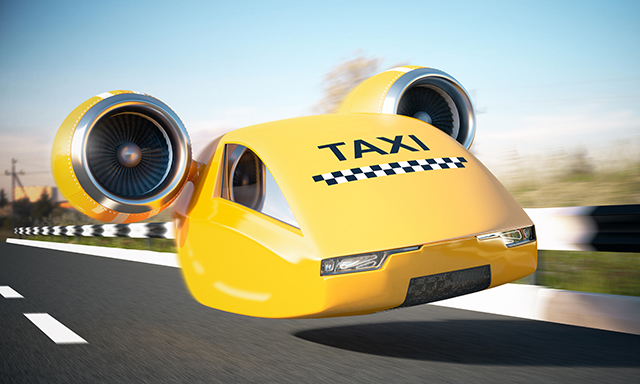Testing has begun on a self-flying taxi expected to launch in 2020
02/18/2018 / By Frances Bloomfield

With Airbus’ autonomous air taxi Vahana having completed its first test flight, humanity is moving one step closer to unmanned aerial vehicle transportation.
According to the DailyMail.co.uk, Project Vahana’s Alpha One aircraft took to the skies on January 31 at the Pendleton Unmanned Aerial Systems Range in Oregon. Originally slated to fly by late 2017, the single-seater, full-scale demonstrator rose to a height of 16 feet, or five meters, before safely and successfully returning to the ground at 8:52 AM. The first test flight lasted 53 seconds. A second one occurred the following day, though its duration wasn’t revealed.
As per a press release from the Vahana team, the specifications for the Alpha One were:
- Width: 20.3 ft or 6.2 m
- Length: 18.7 ft or 5.7 m
- Height: 9.2 ft or 2.8 m
- Takeoff weight: 1642 lb or 745 kg
Despite the briefness of the first flight, it has been praised for serving as a prime example of the feasibility of flying taxis. The Vahana team itself has expressed nothing less than excitement and optimism towards the Alpha One’s achievement. Project executive, Zach Lovering, has described the occasion as a “huge milestone for Vahana as well as the global pursuit of urban air mobility.”
He added: “After two years of planning and building, we are thrilled to see our efforts culminate in successful flight.”
Currently, Lovering and his colleagues are in the process of additional developments and flight tests to bring Vahana to complete flight. If all goes according to plan, then a commercial model of the full-scale aircraft will be available for purchase by 2020. Airbus has stated that the fare of their flying taxis will match those on the ground, that being around 1.50 to two U.S. dollars per mile.
The future of public transportation
Airbus is far from being the only company to invest in autonomous aerial vehicles. Another company that has thrown their proverbial hat in the ring is Ehang, a Chinese drone maker that swore it would make unmanned, passenger-carrying quadcopters a reality. (Related: Would you ride in a drone? Self-flying taxi will have parachutes but no driver.)
This was in 2016 – fast-forward to two years later and Ehang has unveiled to the world the Ehang 184. The company has claimed that the all-electric aircraft can carry a single person across 10 miles or 23 minutes of flight. Moreover, the Ehang 184’s capabilities have undergone extensive and exhaustive testing.
Over a thousand test flights have been carried out with human passengers. These included such feats as a 984-foot or 300-meter vertical ascent, a cruise test that achieved speeds of up to 80.7 mph or 130 km/hr, and a weight test wherein the aircraft had to bear a load of 500 lbs or 230 kg. This is on top of the tests of its durability, which Ehang has claimed entailed subjecting the vehicle to extreme heat, gale-force winds, and heavy fog.
“What we’re doing isn’t an extreme sport, so the safety of each passenger always comes first,” Ehang CEO Huazhi Hu told TheVerge.com. “Now that we’ve successfully tested the Ehang 184, I’m really excited to see what the future holds for us in terms of air mobility.”
Similar to the Vahana team, Ehang is working on fine-tuning the Ehang 184. There’s no word yet on when it will be put on sale, although it might not be the only model that customers can choose. The company said that a two-seater aircraft with a payload of about 617 lbs or 280 kg has already been developed and tested.
Visit Inventions.news to remain updated on any and all news regarding flying taxis and other technological advancements.
Sources include:
Tagged Under: aerial taxis, aerial vehicles, autonomous driving, drones, Ehang, flying taxis, flying vehicles, future tech, roadways, self-flying taxis, transportation, Vahana




















